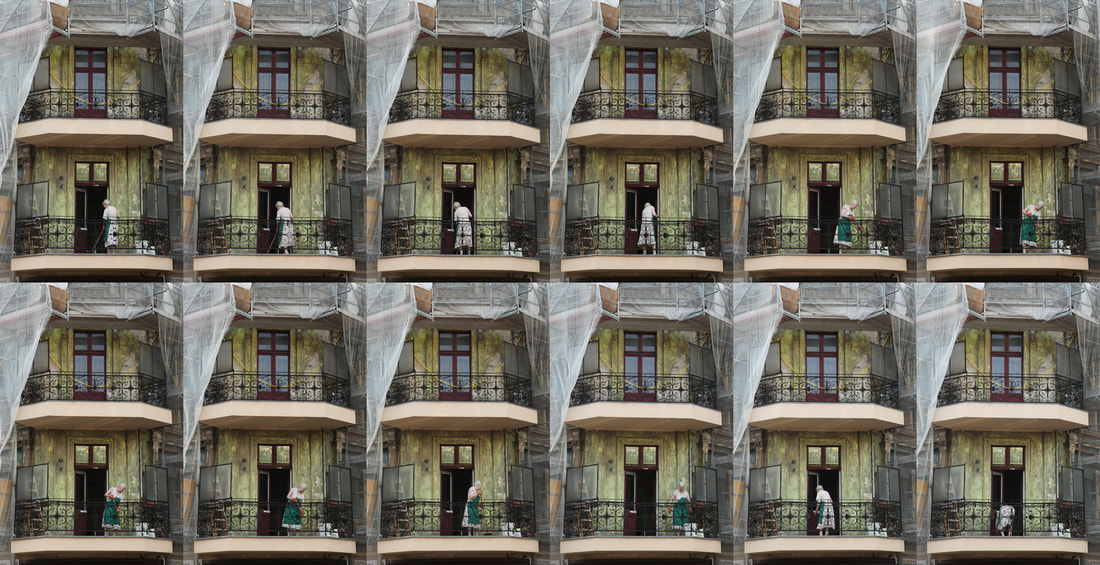|
Photographic printing is a matter of craft and sensibility, deep intuition of colour and contrast, and infinite patience. Danny Pope was for me the best colour printer in the world. Moreover, he is one of the few who has been able to translate the skills of traditional wet printing to the digital domain. This has not been achieved without considerable pain for a man being able to produce an immaculate Cibachrome or C-Type in a matter of minutes simply by using a magicians hand movements between the enlarger and paper. The clumsiness and inelegance of computers is difficult to come to terms with for one used to stroking density and shade out of thin air, it seems like trying to dance in a suit of armour, or perform surgery with a scalpel tied to the end of a broom handle. Sensuality is replaced by mathematics. Left and right brain have to swap places.
I must bear some of the blame for this suffering, having spent years insisting that digital is just another medium, one impossible to ignore. Eventually, with extreme reluctance, he began to experiment, and for the next five years pronounced all things digital worthless. After a great of swearing, cursing, condemnation and berating finally a print was produced that he pronounced himself satisfied with. The quality of large format prints he is now making speak for themselves. Clearly, they take digital printing to a new level, The application of a master photographic printer's eye to producing a digital print. Digital alchemy. Most give up, but Danny pushed through the pain barrier. The results are not achieved by software, tricks or profiles, but through care, patience, attention to detail, application to craft and a profound understanding of colour and content an quality. Anyone who thinks they can plug in an Epson and produce great prints with the right profile is fooling themselves. Great printing takes years of dedication and painstaking refinement of a way of seeing. Danny Pope loves photography. He is a good photographer himself, but has no pretensions as an artist. He sees his work as strictly artisan, but I disagree with this. I see him as more akin to a musician who can take the work of a composer and transform it either into something dull or lifeless, or into a vibrant and inspiring interpretation that adds dimension and feeling to the work. A bad print destroys a great photograph - whilst a good print is like a great performance that lifts it to a new level. There is no way to define the difference between a great performance and a mediocre one. The instruments, the room, even the performer can be the same, and yet one performance can be transcending and another tedious. The brain has more than five times as much space dedicated to vision as it does to sound. The complexity of visual perception and interpretation is incalculable. What makes a great print has far greater subtlety and indefinable magic than great music. It requires a deep feeling, experience, and endless patience. It is neither logical nor calculated, and it can never be pre-programmed. Printing is a quiet art-one that is not filled with congratulation and applause. But when one talks of great music, both the performer and the composer are described as artists. In photography, the printer must share this mantle, since he can ruin or reveal the picture. Hew must work with impeccable skill and a sure confidence; sensitivity to the to the character and vision of the photographer whose work he brings to life. AC John Ruskin wrote " The greatest thing a human soul ever does in this world is to see something and tell what he saw in a plain way. Hundreds of people can talk for one who can think, but thousands can think for one who can see. To see clearly is poetry, prophecy, and religion all as one" The photographer and the printer collaborate to fulfill this principle in the purest way imaginable. Andrew Catlin 2005 |
If you have a question or would like to leave a comment, please post it here.
seePhotography is a way to see, understand and describe the world. archives
July 2023
categories |

|
|

 RSS Feed
RSS Feed